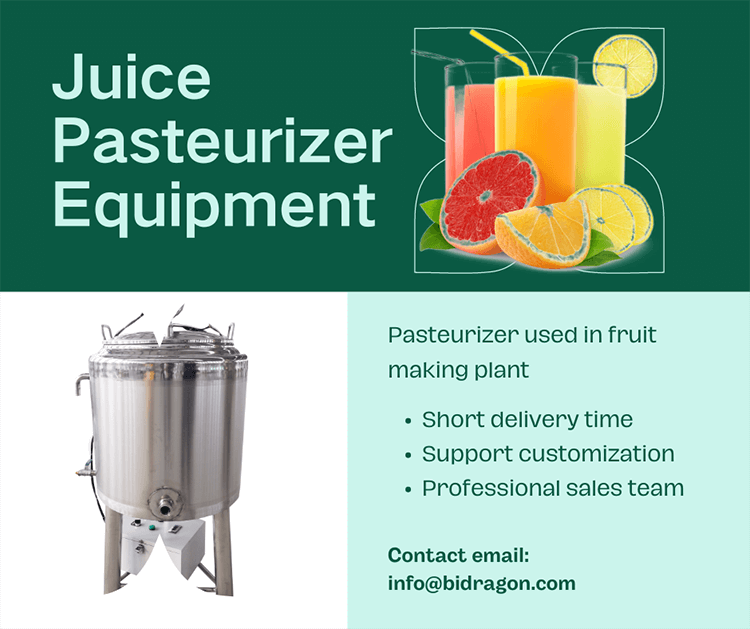Pasteurization is a commonly used process in the juice industry to ensure the safety of juice products and extend their shelf life. This process involves heating the juice to a specific temperature for a period of time and then rapidly cooling it. Pasteurization helps to eliminate or reduce harmful bacteria, yeast, mold, and other microorganisms that may exist in fruit juice.
Here are some key points about the application of pasteurization in fruit juice:
1. Safety: Pasteurization is mainly used to destroy any pathogenic microorganisms that may exist in fruit juice, such as Escherichia coli, Salmonella, or Listeria. If these microorganisms are consumed, they can lead to foodborne diseases, so pasteurization helps ensure the safety of fruit juice.
2. Extended shelf life: Pasteurization helps to extend the shelf life of fruit juice by eliminating or reducing microorganisms. It inhibits the growth of microorganisms, enzymes, and yeast that cause spoilage. Over time, these microorganisms and enzymes can lead to taste deterioration, color changes, and product degradation.
3. High Temperature Short Term (HTST) Pasteurization: This method involves heating fruit juice to a temperature of around 72 ° C to 85 ° C (161 ° F to 185 ° F) for a short period of time, typically 15 to 30 seconds. It can effectively kill most pathogenic microorganisms while minimizing calorie related changes in juice flavor and nutritional quality.
4. Ultra high temperature (UHT) pasteurization: UHT pasteurization involves heating fruit juice to a higher temperature, usually around 135 ° C to 150 ° C (275 ° F to 302 ° F), for a short period of time, usually a few seconds. This process ensures the destruction of a wider range of microorganisms, thereby extending the shelf life without refrigeration. UHT processed fruit juice is usually sold in sterile packaging.
5. Flavor and nutritional considerations: Pasteurization may have a slight impact on the flavor and nutritional quality of fruit juice. HTST pasteurization aims to minimize these effects, while UHT pasteurization may lead to some changes in taste and nutritional composition. However, this impact is often considered acceptable, and the benefits of improving safety and extending shelf life outweigh these minor changes.
It should be noted that although pasteurization can effectively reduce microbial contamination, it is not a sterilization process. Some non pathogenic or heat-resistant microorganisms may survive the pasteurization process, which is why proper handling, storage, and good production practices are crucial for maintaining the quality and safety of fruit juice throughout its shelf life.
